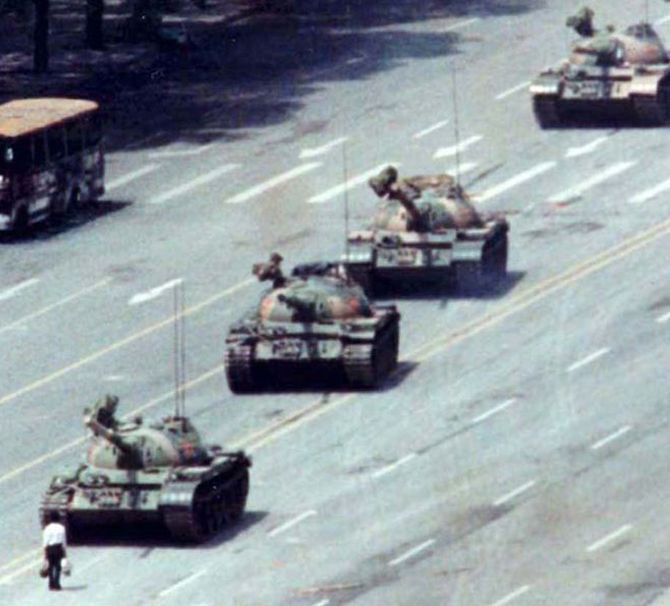
Wednesday marks the 25th anniversary of China’s infamous Tiananmen Square massacre, an event that defined a generation of activists and shocked the world.
Rediff.com presents some of the poignant moments from the bloody protests.
…
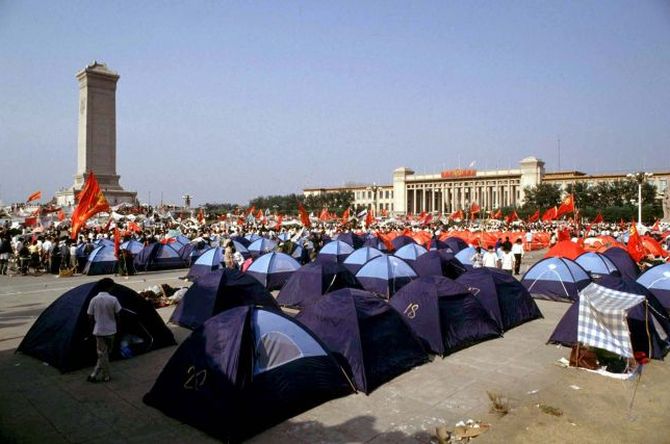
Tiananmen Square, provocatively named Gate of Heavenly Peace, occupies a hundred acres in Beijing. It is a large, open space where parades are carried out, red flags flutter and on October 1, 1949 Mao Zedong announced the birth of the People’s Republic in China. However, following the protests in 1989, the Square is now popular for dissent and protests.
It all began on April 15 1989, following the demise of Hu Yaobang, a former Communist leader who supported democratic reforms, thousands of students filled Beijing’s large, central square to demand for better reforms and governance in the country. Demanding changes, they went on hunger strikes, chanted slogans and soon protests spread across various other universities.
…
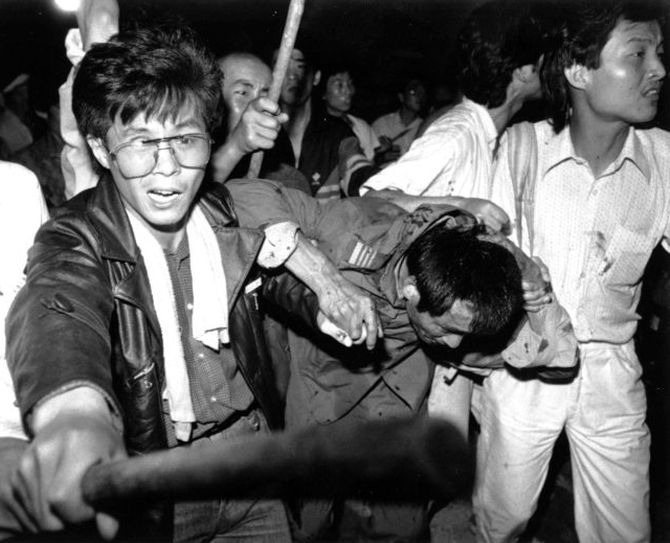
The students were joined by workers, peasants, intellectuals, and the media. They demanded more freedom and democracy. Some even sought multi-party democracy and elections. The protests stretched on for weeks and soon, it turned ugly with protesters being arrested, violent clashes between students and security forces.
…
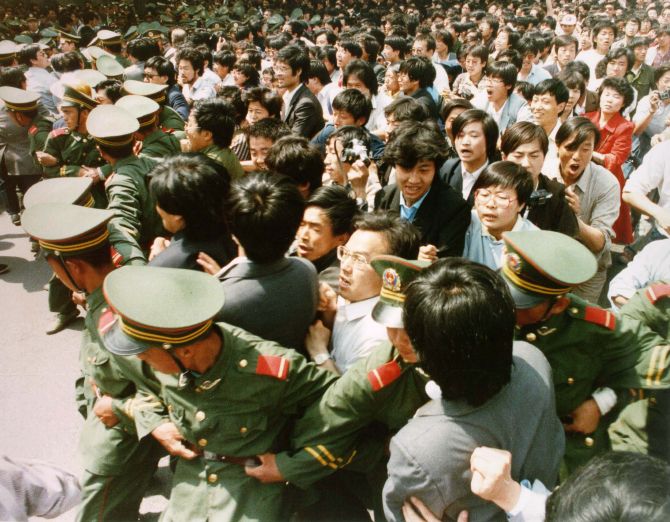
On the night of June 3 and the early hours of June 4, the military was ordered to enforce martial law in the country’s capital. Tanks rumbled through the streets and soldiers started moving to the square. With the students trying to block the soldiers, some troops started firing, causing injuries to countless of innocents.
The injured were rushed to nearby hospitals on bikes and rickshaws. The bloodshed was the worst the country had seen.
…

Angry at the unprovoked firing, they gathered once again in the square. Soldiers opened fire again and continued to do so throughout the day.
By June 5, the army had full control of Beijing, but it was yet to see a single act of defiance, which till date is etched in the minds of people. A lone man stood in front of a line of tanks and was able to stop them from moving ahead. The exact tally of dead and injured remains unknown: the Chinese government says about 200 people were killed; journalists present in Beijing that day say about 1,000 were killed; the German Red Cross and Beijing residents placed the number of dead at around 3,500.
…
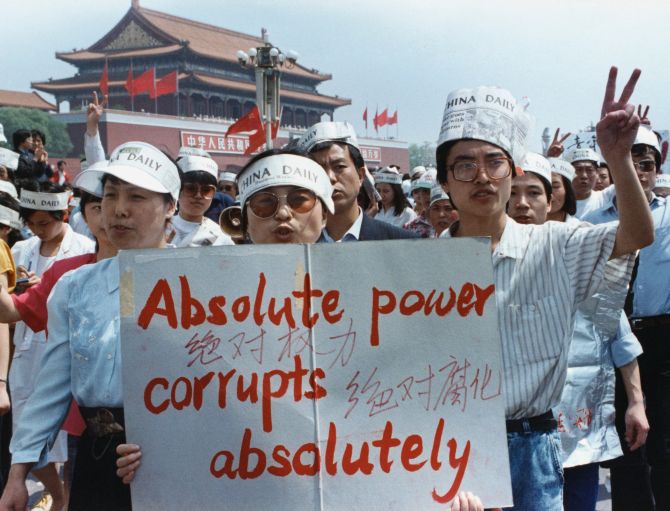
The protests remain a taboo topic in mainland China, and Beijing has never given a full accounting of what happened during the crackdown that killed hundreds, possibly thousands. However, in Hong Kong, the memories of the protest live on through the June 4th Museum, dedicated to preserving the memory of one of the darkest periods in China’s recent past through photographs, artifacts, videos and written histories of the events.
…
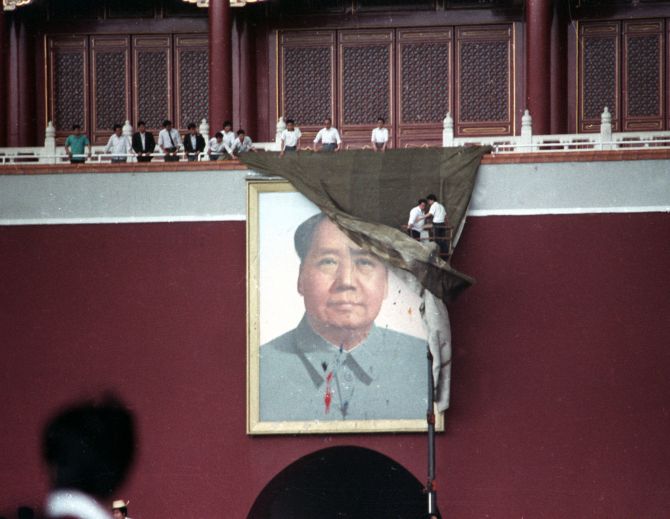
In China, there has been a conscious effort to suppress the facts about the protests. Days before the 25th anniversary of the bloody protests, the number of armed police and other security personnel on all roads leading to the square in central Beijing has been increased. Google services have experienced significant disruption in China. The Wall Street Journal said its English- and Chinese-language websites have been blocked since Saturday. Sina Weibo, China’s largest social media platform, has been censoring Tiananmen and 25 years ago for the past two weeks